Answering the question, "Is galvanized steel or aluminum steel more expensive?" A simple unit price decision is not sufficient. The unit price of aluminum is generally higher, but its lighter weight and lower density may mean overall usage cost advantages. While galvanized steel might be cheaper, processing difficulty, corrosion protection, and maintenance costs also influence overall costs. Therefore, an overall evaluation must be done, taking into account unit cost, density, processability, and lifecycle costs. In this article, we give a comparative study in detail, which we feel will be helpful.
Galvanized Steel vs. Aluminum Steel: Key Comparison Quick Reference
| Comparison Dimensions | Galvanized Steel | Aluminum Steel |
| Corrosion Resistance | Good, the zinc coating provides sacrificial protection. | Excellent, a dense oxide film naturally forms on the surface, providing good resistance to atmospheric corrosion. |
| Lightweight Advantage | Poor, high density (approx. 7.85 g/cm³). | Good, low density (approx. 2.7 g/cm³), so lighter in weight for the same strength. |
| Processing Difficulty | Good strength, but energy-hungrier to shape; high weldability | Easy to stamp and bend; relatively poor weldability, requiring special handling. |
| Cost | Low material cost per unit, but overall manufacturing cost must factor in weight and processing. | High material cost per unit, but lightweighting will lower downstream costs such as transportation and energy. |
- In general, both have their advantages and disadvantages, and neither is an absolute substitute for the other. Galvanized steel wins in terms of upfront cost and strength and thus is suited for heavy structures where weight is not a factor.
- Though aluminum steel is more costly on a per-unit basis, its lightweight advantage and resistance to corrosion can reduce lifecycle costs overall, and it is being utilized throughout transportation, electronics, and other applications. The choice depends on specific application priorities.
Why Trust This Guide? Practical Experience Of LS Experts
LS possesses decades of technical experience and a vast database of industrial applications within the metal material industry. Its professional team not only possesses a deep understanding of material properties but also specializes in providing customers with scientific material selection services based on actual engineering practices. The conclusions and data in this guide all derive from the first-hand experience of LS's frontline professionals, so the recommendations are highly professional and reliable.
For example, in an outdoor communications chassis project, suppose the customer initially considered employing low-cost galvanized steel. By applying a total cost of ownership (TCO) analysis model, LS experts were able to demonstrate that while the unit cost of aluminum was greater, its superior corrosion resistance and light weight significantly reduced maintenance, transportation, and energy costs over the product's lifetime. Ultimately, the aluminum alloy solution provided by LS presented improved long-term cost competitiveness and product competitiveness, one basic articulation of LS's value proposition.
Can Galvanized Steel And Aluminum Be Directly Compared To See Which Is More Expensive?
It is a natural, but oversimplified, materials selection question. Answering simply "which one is more expensive" may appear to be straightforward but can be very misleading and does not reflect the ultimate economic difference.
If we only compare the unit cost of bare material, the answer would seem simple: aluminum sheet typically costs considerably more per kilogram than galvanized steel. This reality puts aluminum at a disadvantage in initial cost comparisons. However, not taking the comparison further is definitely biased. The true cost of the finished part is determined by a complete formula, and the unit cost of the material is merely one variable.
The price difference is enormous because it is systematically influenced by many factors:
- First, there is material density: aluminum has a density of approximately 2.7g/cm³, while that of steel is 7.85g/cm³. The result is that while aluminum takes the same amount (by volume) as steel to make the same part, it weighs significantly less. This partially offsets the unit cost disadvantage when pricing by weight.
- Second, bargaining power is influenced directly by purchase quantity and specifications. Bulk buying can actually alter the unit price difference.
- Further, processing difficulty (such as stamping formability and weld process requirements) and after-painting, transportation, and even life-time maintenance costs contribute to the overall cost of ownership (TCO).
- It does not make any sense, therefore, to simply determine what is more expensive or less expensive without the specific application, design, and procurement context.
- A scientific analysis must go beyond a price-per-kilogram comparison and completely consider density, processability, and lifecycle costs in order to make the most cost-effective long-term decision.
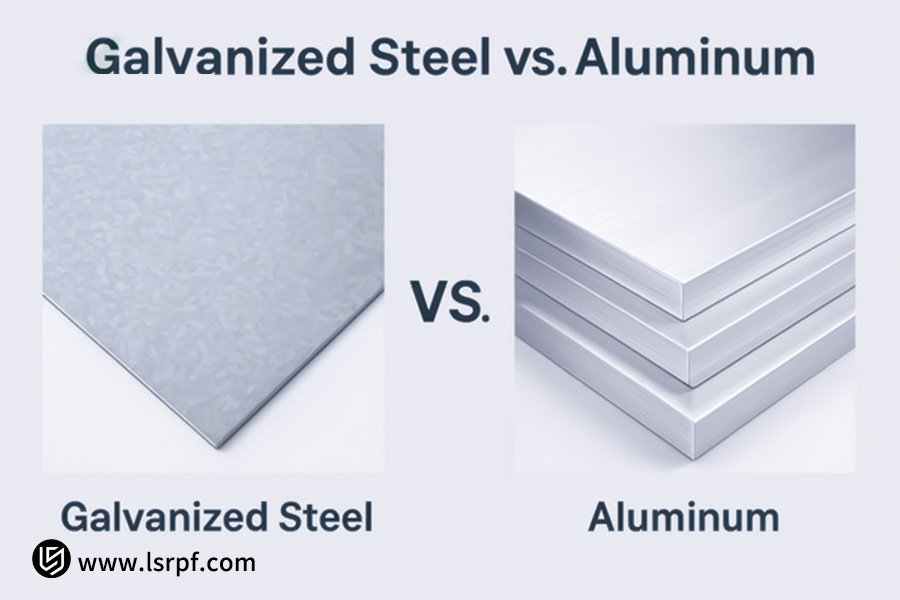
Beyond Price, Focus on the Essentials: A Corrosion Resistance Comparison
In material selection, corrosion resistance directly affects the reliability and life of the product and is the basis for "lifecycle cost." Both galvanized steel and aluminum have a different corrosion protection mechanism. Galvanized steel relies on a zinc coating for providing "sacrificial anodic protection." In spite of small scratches, the zinc corrodes first, before the base steel, protecting the interior. This protection, however, is consumable. When the zinc layer is exhausted or badly damaged, the inner steel will quickly rust. The durability of the protective layer is related to the thickness of the zinc layer.
By comparison, the corrosion resistance of aluminum sheet is due to its inherent nature. Aluminum tends to naturally develop a dense and stable aluminum oxide passive film on the surface of aluminum, which can effectively shut out moisture and oxygen and has "self-healing" protection. Particularly in the severe marine environments of high humidity and salt, high-quality aluminum alloys tend to outlast galvanized steel, with stable appearance and performance being retained over the extended period of time. The relative corrosion resistance of the two is compared briefly in the following table:
| Characteristics | Galvanized Steel | Aluminum Sheet |
| Corrosion Protection Principle | Sacrificial anode (passive consumable protection) | Surface oxide layer (dense passive film with self-healing properties) |
| Key Benefits | Good initial protection at low cost | Excellent long-term resistance to weathering, especially atmospheric and salt spray corrosion |
| Key Weaknesses | Substrate subject to rusting after the zinc layer has been consumed, and cuts and scratches are weak points in the protection. | Pitting corrosion can occur in certain acidic and alkaline environments. |
As can be noted, aluminum sheet possesses an inherent advantage in longer corrosion resistance, which significantly reduces the occurrence of frequent maintenance and replacement. The value of this extended service life is a key consideration when evaluating its total cost.
What Are The Principal Factors That Decide Their Final Prices?
The final price of galvanized steel and aluminum sheets is not determined by a single factor; rather, it is a result of a complex interplay of several factors. If we simply compare the price per ton of raw material, aluminum is more costly than steel, but that does not present the whole story. The real price difference is in a series of subsequent factors.
Raw material
The most glaring place to start is the cost of the raw material. Aluminum requires a lot more energy to smelt compared to steel, so its market benchmark price tends to be significantly higher than that of galvanized steel. Material density is the direct game-changer, however. Aluminum's density (approx. 2.7 g/cm³) is merely a third of steel's (approx. 7.85 g/cm³). This means that the amount of aluminum required to produce the same structural component is considerably less, to a large extent offsetting its higher unit price.
Grade and specifications
Grade and specifications are also powerful determiners of price differentiation for the same material. The price of aluminum alloy 5052-H32, which is a corrosion-resistant grade, differs from that of 6061-T6, a high-strength grade. The weight of galvanized steel coating (e.g., the G90 standard indicates a 0.9-ounce-per-square-foot thickness of zinc coating) has a direct effect on its price as well as corrosion life.
Market volatility
Finally, one cannot ignore market volatility. Aluminum prices track global commodity markets and electricity prices (the electrolytic aluminum process is extremely energy-intensive) directly, and their volatility tends to be more intense than for steel, introducing another source of uncertainty into the cost budgets of long-term projects.
| Influencing Factors | Impact on Galvanized Steel Sheet | Impact on Aluminum Sheet |
| Base Material Cost | Low, relatively stable price. | High, and high smelting energy consumption. |
| Material Density | Increased density results in heavier components for a given volume, which can increase transportation and installation costs. | Reduced density offers significant lightweighting advantages, with less material weight for a given volume, which partially offsets the cost penalty. |
| Specifications and Grades | Base material and zinc coating thickness (e.g., G90/Z275) significantly affect prices. | Prices differ extensively with respect to alloy series (e.g., 1, 5, 6), alloy state (e.g., O, H32, T6), and performance. |
| Market Fluctuations | Prices are relatively stable, with some impact from raw materials such as iron ore and coke, as well as from national policy. | Prices are linked to international futures markets and are highly sensitive to electricity prices, making them more volatile. |
The final price is a dynamic result of the interaction among base unit price, physical properties, special specs, and market conditions. Thus, any careful procurement decision must go beyond a simplistic "price per kilogram" comparison and conduct a comprehensive, multi-dimensional, and integrated process assessment.
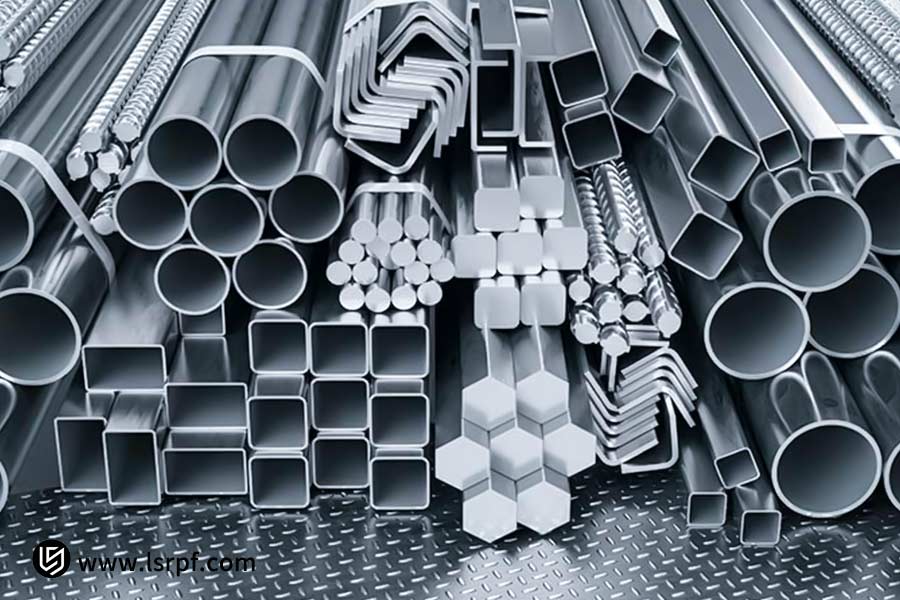
A Key Consideration in the Lightweighting Era: Weight vs. Strength
In modern manufacturing, lightweighting is a basic approach to optimizing product performance and reducing energy use and expenditures. In this context, material strength and density (and, more significantly, strength-to-weight ratio) are a top priority. Galvanized steel and aluminum greatly differ in these respects, with immediate implications on the feasibility and financial viability of the end application.
Physical level
At a fundamental physical level, aluminum's density (approximately 2.7 g/cm³) is only a third of steel's (approximately 7.85 g/cm³). That is, for the same volume, parts made of aluminum can significantly reduce weight by over 60%. However, lightweighting is not just about weight but also about strength. Although typical aluminum alloys generally have lower tensile strength than normal low-carbon galvanized steel, the situation is generally reversed when "strength-to-weight ratio" (or specific strength) is considered. Several aluminum alloys offer higher load-carrying capacity per unit weight, which is found to be of critical importance for weight-critical applications.
Application
In applications such as transport equipment, mobile structures, or parts subject to frequent movement, the lightening advantages of aluminum can result in very significant overall benefits. Less weight means lower inertia, lower energy consumption (e.g., improved range of vehicles), greater operational freedom, and lower transportation and assembly costs. Such savings often completely offset or even exceed the initial material cost disadvantage, resulting in improved value for money in terms of total cost of ownership (TCO).
| Features | Galvanized steel sheet (with DX51D+Z as an example) | Aluminum sheet (with 5052-H32 as an example) |
| Density | Approximately 7.85 g/cm³ | Approximately 2.7 g/cm³ |
| Typical tensile strength | 270-500 MPa | 210-250 MPa |
| Strength-to-weight ratio | Relatively low | Much greater |
| Core advantages | High bearing capacity and absolute strength | Good lightweight and high specific strength |
In selecting materials, never compare price or absolute strength alone. If the design goal is weight saving, energy conservation, or dynamic performance improvement, aluminum sheet's high strength-to-weight ratio makes it the ideal choice, and the long-term benefit it delivers can repay the initial investment in short order.
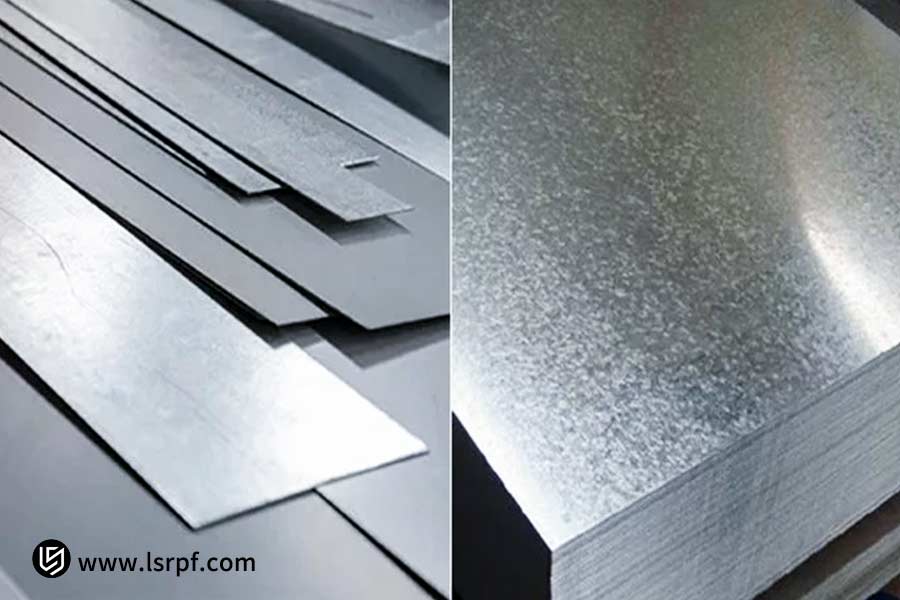
How Does LS Select Cost-effective Materials For Its Customers?
1. Customer challenge:
A major communications equipment manufacturer faced a familiar dilemma: selecting materials for an outdoor enclosure. They needed to control up-front costs while giving the product long-term corrosion protection in aggressive environments, sufficient structural integrity, and ease of installation and shipping. The customer preferred galvanized steel, based on up-front cost savings, but was uncertain about long-term maintenance costs.
2. LS's innovative solution:
LS's materials engineering team did more than simply offer the two alternatives as an either-or choice. Instead, they conducted an innovative analysis for the client with their proprietary total cost of ownership (TCO) analysis model. During the analysis, it was discovered that while galvanized steel offered lower material costs, its heavier weight would contribute significantly to transport and logistics costs.
Additionally, to prevent rust on the scratched areas, additional surface painting was required, adding process and cost. Conversely, although the unit price of the 5052-H32 aluminum alloy solution proposed by LS was greater, its excellent lightweight characteristic significantly reduced the weight per box, which led to considerable shipping cost savings. In addition, its inherently superior corrosion resistance eliminated the need for painting, saving the associated costs and time and significantly reducing maintenance costs and quality risks throughout the entire lifecycle.
3. LS's excellent results and value embodiment:
Lastly, by precise calculation of the data, LS clearly presented to the customer the aluminum solution's lower overall cost of ownership and longer maintenance-free life. The customer adopted this solution, successfully achieving enhanced long-term cost-effectiveness and product competitiveness. This example further demonstrates that LS does not merely sell material, but rather provides scientific material selection solutions founded upon in-depth analysis and extensive experience, truly creating value for customers.
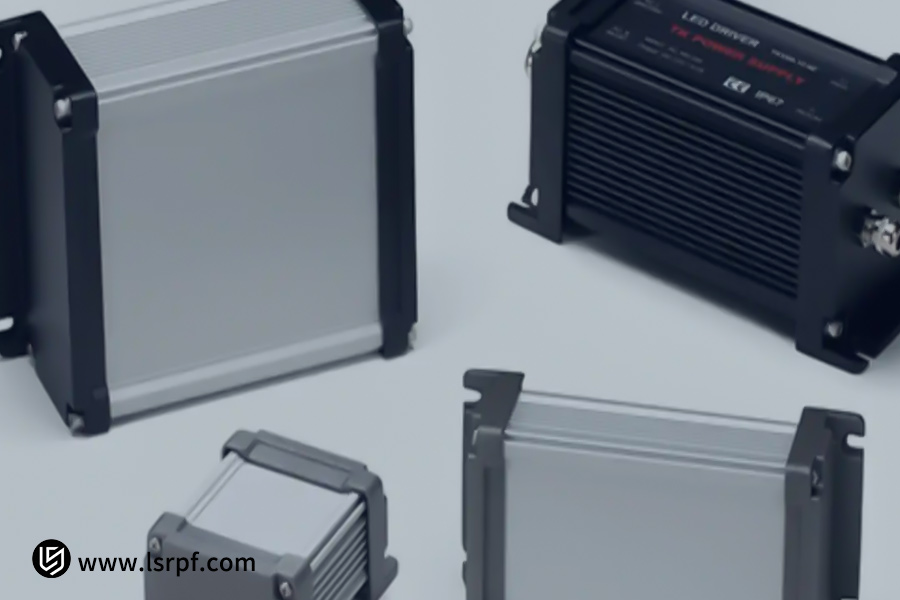
Don't Overlook Hidden Costs: A Comparison of Processing Difficulty and Cost
Most users overlook a fundamental consideration in material selection: differences in processing performance have a direct equivalence in differences in production efficiency and cost. The material quote is only the tip of the iceberg; whether or not it can be efficiently processed to finished part has a great influence on the total cost of manufacturing.
Aluminum sheet possesses superior ductility and plasticity overall, making it highly adaptable to cold working processes such as high-speed stamping, deep drawing, and complex bending. This not only enables the creation of more complex and precise parts, but also conserves energy and processing time. On the other hand, galvanized steel sheet's higher strength and hardness, while adding to structure stiffness, also requires larger-tonnage stamping machines and heavier molds, accelerating mold wear and aging and the processing cost per part.
| Processing Characteristics | Galvanized Steel Sheet | Aluminum Sheet |
| Forming Difficulty | Higher, high strength requires greater processing forces. | Lower, excellent ductility makes stamping and bending easier. |
| Energy/Equipment Needed | Requires higher tonnage equipment, which consumes relatively high energy. | Requires lower tonnage, which consumes less energy. |
| Mold wear | Severe, requiring mold maintenance cost and mold life. | Minimal, actually extending mold life. |
| Surface Treatment | Anti-corrosion treatment is required after cutting and welding, with additional steps. | It tends to maintain the natural oxide film, without additional corrosion protection. |
| Welding suitability | Very good weldability, mature process. | Requires special welding material and procedures (such as MIG/TIG), high technical skills necessary. |
- Aluminum creates efficiency advantages in most processing operations, which results in fewer production losses and shorter production cycles, effectively offsetting some of its material costs.
- The "hidden costs" of galvanized steel are instead reflected in the higher demands on equipment, molds, and other post-processing. Therefore, a general assessment of processing feasibility is key to accurately establishing the final part cost.
How To Choose For Different Application Cases?
There is no single answer to choosing between galvanized steel and aluminum. The most scientific choice always originates from a thorough investigation of the end-use case of the product. Different applications place different emphases on basic material needs, and the right choice can transform material attributes into a product's basic competitiveness.
Case A: Why Aluminum?
For example, the outer case of an upscale consumer electronics product. Its design requirements are an attractive appearance, a rich set of colors, and a light, mobile user experience. Here again, despite its larger initial unit cost, aluminum is the perfect material. Its high ductility allows it to be readily fabricated into a dense, integrated form. More importantly, its surface can be anodized to create a subtle wear-resistant texture and a wide variety of colors (e.g., space gray and champagne gold) that cannot be achieved by spray coating galvanized steel. Moreover, its lightness directly adds to the product's portability and high-end feel, an advantage far surpassing the cost difference.
Case B: Why Use Galvanized Steel?
On the other hand, a large industrial warehouse building lining support panel project required extremely high static load-carrying strength, the lowest initial procurement cost possible, and sufficient corrosion resistance to ensure structural safety. In this instance, the advantages of galvanized steel sheeting are evident. Its higher strength and stiffness suffice to withstand the enormous loads, and the material's initial cost per square meter is significantly lower than aluminum. While heavier, this is not an important drawback in fixed structures, and the galvanized coating will offer sufficient rust protection indoors, completely satisfying all the basic requirements of this project.
Lesson: Professional Analysis Creates Value
These two contrasting examples clearly show that it is meaningless to discuss material merits independent of specific applications. This is the fundamental value of LS. With our abundant industry application experience and scientific analysis capabilities, we do more than offer a choice between two materials. We fully understand your product function, market position, and cost structure. On the basis of end-user experience and total cost of ownership (TCO), we recommend the material solution that best provides commercial success and technical reliability. Choosing LS is choosing a strategic materials partner who is closely involved in your product design.
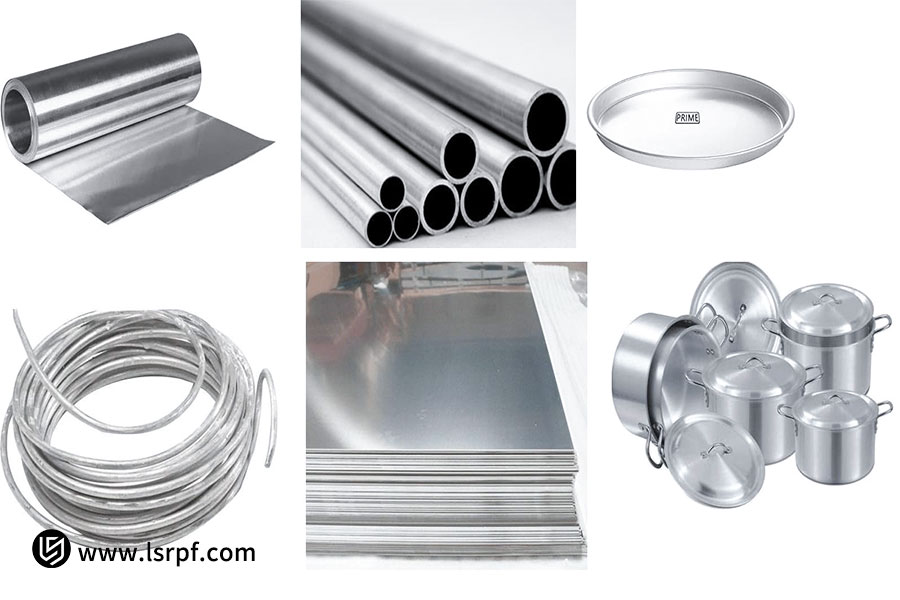
FAQs
1. So, in the end, which is less expensive?
If we merely compare raw material price per kilogram, galvanized steel is indeed more economical. If we estimate the cost of manufacturing the identical functional part, nevertheless, the outcome might be drastically dissimilar. Aluminum's low density enables light design that saves transportation, installation, and energy cost. Its higher corrosion resistance also significantly reduces maintenance costs over the lifecycle. On a lifecycle overall cost of ownership (TCO) basis, therefore, aluminum generally delivers better long-term economic value.
2. Why is aluminum's price volatility greater than that of steel?
Aluminum's price volatility is significantly greater than that of steel, primarily due to its very energy-intensive process. Electrolytic aluminum smelting consumes an immense amount of electricity, and electricity price fluctuations have direct pass-through to the cost side. Further, aluminum is a very liquid globally traded commodity. Its price is directly linked to London Metal Exchange (LME) futures contracts and thus is increasingly susceptible to worldwide macroeconomic conditions, supply and demand, and geopolitical factors. Consequently, it has greater financial characteristics and price volatility.
3. How do I make a final decision for my project?
It is our recommendation not to take the simplistic approach of making a decision based on material unit cost. A sound decision is a systematic trade-off among many different factors like part strength requirements, lightweighting requirements, corrosion resistance, processing complexity, and project budget as a whole. The easiest approach is to reach out to the LS engineering team with your specific application scenario (e.g., part drawings and performance requirements). We will provide you with a data-driven, impartial assessment based on an expert TCO model.
4. Can LS provide a detailed material cost analysis?
Of course. This is one of LS's main services. Simply provide initial part drawings or technical specifications (e.g., size, application, and environmental requirements), and our engineering team will initiate the analysis process, providing a detailed cost breakdown of raw material, processing technology, surface treatment, and potential losses. We will suggest the most cost-effective solution based on the total cost of ownership (TCO) of different material options for the entire lifecycle.
Summary
It's not a simple question to answer "which is more expensive, galvanized steel or aluminum." Galvanized steel is indeed more economical if we simply compare the unit cost of raw materials. However, if we consider total cost of ownership (TCO), aluminum will have lower costs overall in the long term due to its light-weight design, fewer transportation and energy uses, improved corrosion resistance, and improved processing efficiency. Therefore, the "cost" of a material is not a constant; it's largely a function of end use, performance requirements, and lifecycle requirements of the product. True cost-effectiveness is the outcome of diligent matching of material properties with a scientific assessment of overall costs.
We strongly encourage you not to make a decision on the basis of unit price alone. LS, relying on its extensive materials database and professional TCO analysis models, is able to provide you with precise, tailored analysis. Simply provide your part specs and application conditions, and our team of engineers will give a detailed comparison report and optimization suggestion to enable you to see through the actual costs and make the most commercially viable decision. Contact LS to initiate your scientific material selection experience.
Upload your design drawings now and get an instant CNC machining quote (CNC machining price), let LS be your strong backing in pursuit of ultimate CNC machining precision!
📞Tel: +86 185 6675 9667
📧Email: info@longshengmfg.com
🌐Website:https://lsrpf.com/
Disclaimer
The contents of this page are for informational purposes only.LS seriesThere are no representations or warranties, express or implied, as to the accuracy, completeness or validity of the information. It should not be inferred that a third-party supplier or manufacturer will provide performance parameters, geometric tolerances, specific design characteristics, material quality and type or workmanship through the LS network. It's the buyer's responsibilityRequire parts quotationIdentify specific requirements for these sections.Please contact us for more information.
LS Team
LS is an industry-leading companyFocus on custom manufacturing solutions. We have over 20 years of experience with over 5,000 customers, and we focus on high precisionCNC machining,Sheet metal manufacturing,3D printing,Injection molding,Metal stamping,and other one-stop manufacturing services.
Our factory is equipped with over 100 state-of-the-art 5-axis machining centers, ISO 9001:2015 certified. We provide fast, efficient and high-quality manufacturing solutions to customers in more than 150 countries around the world. Whether it is small volume production or large-scale customization, we can meet your needs with the fastest delivery within 24 hours. chooseLS technologyThis means selection efficiency, quality and professionalism.
To learn more, visit our website:www.lsrpf.com








